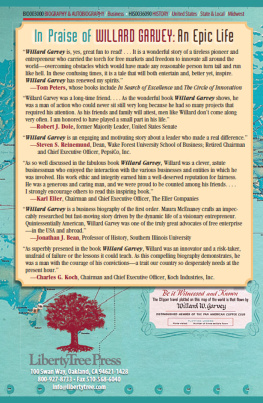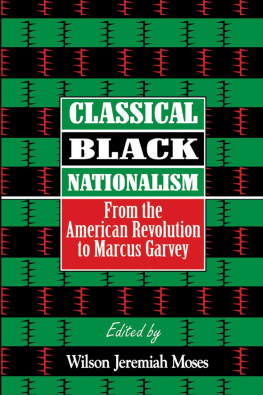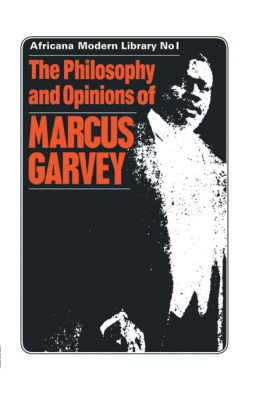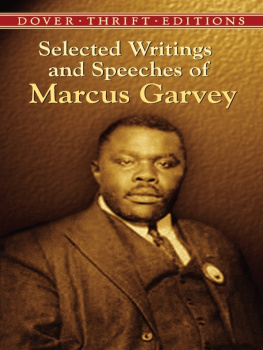This edition published in Great Britain by
FRANK CASS AND COMPANY LIMITED
2 Park Square, Milton Park, Abingdon, Oxon, OX14 4RN
and in the United States of America by
FRANK CASS AND COMPANY LIMITED
270 Madison Ave,
New York NY 10016
Transferred to Digital Printing 2005
with the kind permission of Mrs. Amy Jacques Garvey.
PART I
First edition | 1923 |
Second edition | 1967 |
Second impression | 1983 |
Third impression | 1989 |
PART II
First edition | 1925 |
Second edition | 1967 |
Second impression | 1983 |
Third impression | 1989 |
AN INTRODUCTION TO THE SECOND EDITION
by
E. U. ESSIEN-UDOM
RACE AND COLOUR IN THE CONTEMPORARY WORLD
When the second volume of the Philosophy and Opinions of Marcus Garvey was first published over forty years ago, the compiler, Mrs. Amy Jacques Garvey, requested that it should not be read with the eye or mind of prejudice, but with a righteous desire to find the truth, and to help in the friendly and peaceful solution of a grave world problem for the betterment of humanity That request is equally pertinent today, for, although much has changed in and outside the Negro World since these volumes were compiled, the problem of race and colour constitutes one of the most perplexing issues confronting the international community. There are few major world problems which are not somehow coloured by the race question. It is evident, though not often openly admitted, that race and colour play some part in contemporary thinking and global political strategy of the major Powers. Both equally affect the lesser (especially African and Asian) Powers; and often race colours some of the political debates, if not the decisions, on important problems brought before the United Nations Organisation. That race and colour will continue to be of importance for the world community in this second half of the 20th century, no one can deny. To what extent, it might be asked, do racial pre-dispositions condition political attitudes and responses of the Powers to such situations as apartheid in the Union of South Africa and South West Africa, the unilateral declaration of independence by Southern Rhodesia or their indifference to the fate of Africans in the Portuguese colonies? Is the Sino-Soviet conflict devoid of racial overtones? These are but a few questions which suggest the range of issues that can be affected by the problem of race and colour. But racial questions are complicated also by the relative economic and technological positions of the developed and underdeveloped nations.
Although technology has certainly brought mankind closer, it has also divided the world more sharply between the haves and the have-nots, between those who feel a sense of unchallenged security and those who sense permanent insecurity. The present world community, therefore, rests on the principle of unchallenged supremacy of the rich nations and the permanent subordination of the proletarian nations. The technological and economic supremacy of the minority (mainly white) in the advanced countries over the majority (non-white) of the worlds peoples places the latter in a permanent position of inferiority and insecurity. This sense of insecurity, no doubt, underlies the Bandung idea or other expressions for Afro-Asian solidarity. The Philosophy and Opinions of Marcus Garvey, however, is not a blueprint for the solidarity of Afro-Asian states, rather, it is a collection of the speeches and writings of a remarkable man whose life was governed by one consuming passion: the unity and liberation of the Negro race, and more specifically, freedom of Africa from the clutches of colonial exploitation and racism.
About the Books and the Compiler
Seven months after they had been married1 in New York City, Mrs. Amy Jacques Garvey, who now lives in Kingston, Jamaica, edited and published in 1923 the Philosophy and Opinions of Marcus Garvey. In 1925, while her husband was serving a five-year prison term in Atlanta, Georgia, a second volume bearing a longer title, the Philosophy and Opinions of Marcus Garvey or Africa for the Africans, was published.2 Both volumes were printed at their expense because, according to Mrs. Garvey, most publishers did not want to handle that stuff. To defray the cost of printing, she was compelled to undertake several lecture tours in the United States to raise money for Volume II. She proof-read the manuscripts, and was also responsible for the distribution and sales. Mrs. Garvey reports that Volume II was compiled, published and distributed under enormous pressure.
On March 23, 1925, the United States Supreme Court refused to review on Appeal the Black Star Line case which had led to Garveys conviction and incarceration. Three months later, Garvey asked his wife to get together enough of his speeches, writings and extracts of the trial, and edit them for a book of about 400 pages. For several reasons he wanted this done in a hurry. First, Garvey had feared that if anything happened to him there would be no adequate record of his thoughts and activities, excepting what had appeared in the Negro World, an organ of his movement, or in garbled newspaper reports which often treated him with ridicule and contempt. Mrs. Garvey complied, and in a few months she was able to rush the first copy to him in Atlanta. Secondly, Garvey believed that his case for Executive clemency would be strengthened if his ideas were adequately publicised and understood. For this reason, he pressed an already overworked wife to rush free copies to Senators, Congressmen and prominent men who might be interested in my case. Besides, free copies were also distributed to prominent people outside the United States and to institutions of learning in various parts of the world. After she had completed the whole assignment, Mrs. Garvey reports further that she weighed 98 lbs., had low blood pressure and one eye badly strained. Two doctors advised complete rest. Although this loyal, devoted, and unusually energetic widow gained the satisfaction of sharing completely her husbands ideals and the unrewarding burdens of leadership, Mrs. Garveys memorable reward for her labours was Mahatma H. Ghandis acknowledgement of receipt of these books. Like most of Garveys ventures, the publication of these books was inspired more by his desire to bring the case of the Negro people to the attention of the indifferent world of his time than by financial gain.














